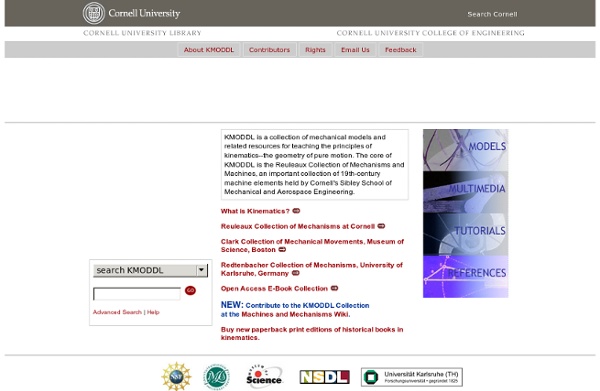



Gilera 300 - pacar I always wanted my motorcycle works better and this "300" started to mutate . The first thing was te dynamo which was tired of working , the fourth alternator that I has installed is the one that has today with its tyristor voltage regulator , all made by myself . The following was the camshaft , it was modified but with such bad luck , when I check the values of degrees whit comparator didn't match with what they had told me , with diferences of more than 5º in general . The engine worked , but with a fuel comsumption of a 600 cc (Fiat) . I logically increased the compression into 9:1 according to the fuel at that time . To stop it , as the engine was obviously another , I installed a brake kit "Doppler" , the best in those days . I bought two Mikuni of 26 mm of diameter and i installed them . I obtain the cilinder heads of the national 300 , in a bargain and i also adapted them with its inverted camshaft .
STAIR ROVER « PoChih Lai Filmed by Juriaan Booij Material : aluminum, maple, bamboo, PU rubber, PVC Inspiring action The piece aims to expanding the capability and possibility of extreme sports as we understand them. Inherited from our natural instincts, sliding as children and snowboarding as adults, the focus is on one of the most influential and stimulating sports – skateboading, aiming to push the boundaries further. The piece creates a groundbreaking form of sport which previously never existed and utilises the hidden energy of our cities – stairs. Inspiring values Extreme sports are hugely various and engages many people to be involved. Creating a legacy No city is so fascinating and encouraging as London. All rights reserved.
Beer Can Engines 23B Shop Textile manufacturing Modern Mosaic (1961) from a closed-down German textile factory, showing symbols for textile manufacturing Processing of cotton[edit] Cotton is the world's most important natural fibre. In the year 2007, the global yield was 25 million tons from 35 million hectares cultivated in more than 50 countries.[1] There are six stages[2] Cultivating and harvesting[edit] Cotton is grown anywhere with long, hot dry summers with plenty of sunshine and low humidity. Ginning The seed cotton goes in to a Cotton gin. The ginned cotton fibre, known as lint, is then compressed into bales which are about 1.5 m tall and weigh almost 220 kg. The cotton seed is pressed into a cooking oil. Preparatory processes - preparation of yarn[edit] Ginning, bale-making and transportation is done in the country of origin.Opening and cleaning Platt Bros. Cotton mills get the cotton shipped to them in large, 500 pound bales. Blending, Mixing & Scutching Carding Carding machine A Combing machine Several slivers are combined. Checking
geo-dome prefab geodesic domes Weaving A plain weave: image of warp and weft A satin weave, common for silk, each warp thread floats over 16 weft threads. Cloth is usually woven on a loom, a device that holds the warp threads in place while filling threads are woven through them. A fabric band which meets this definition of cloth (warp threads with a weft thread winding between) can also be made using other methods, including tablet weaving, back-strap, or other techniques without looms.[3] The way the warp and filling threads interlace with each other is called the weave. The majority of woven products are created with one of three basic weaves: plain weave, satin weave, or twill.[4] Woven cloth can be plain (in one colour or a simple pattern), or can be woven in decorative or artistic designs. Process and terminology[edit] An Indian weaver preparing his warp on a pegged loom (another type of hand loom) Weaving can be summarized as a repetition of these three actions, also called the primary motion of the loom. History[edit]
Artists in Metal柚ark Ho The Internet Craftsmanship Museum Presents: Animatronic human sculpture in bronze and stainless steel Mark Ho in his shop with finished sculpture. (Click on photo to view a larger image.) Introduction… Although this is artist Mark Ho’s first large project, we felt it exhibited such good design and craftsmanship that visitors to this museum would like to see it. About the craftsman… Mark Ho is from Amsterdam, Netherlands. As he continued to work in film he found it wasn’t really what he wanted to do. ZOHO ARTFORM No. 1 can take any number of natural human poses due to the large number of moveable joints paralleling human form built into its structure. Making the prototype Mark found a metalworking artisan who was willing to work with him and show him the techniques of machining metal. Mark Ho at work in his well-equipped metal shop. He began by making the hands, with the idea of making them as small and detailed as possible. What the future holds Specifications of ZOHO ARTFORM No.1 Details:
Ideas - TREEFINDER - StumbleUpon My subversive attempts to do something useful. The Rotary Piston Array Machine -- Air-Sea Temperature Difference Engine -- Solarthermal Power Generator The Rotary Stirling Engine The Wave Pump Heat Engine With No Compressor Portable Tent Platform The rotary piston array (RPA) is the possibly most compact and most elegant machine to transform the volumetric change of gas into shaft work and vice versa. It can be used as pneumatic motor, steam engine, gas compressor, vacuum pump and the like, but also as part of new heat or combustion engines which – like the Stirling engine – open new ways to harvest renewable energy. Other possible uses are refrigeration and air-conditioning. The idea has been overlooked for at least 110 years, as some old patents indicate, and it seems to have been reinvented several times (e.g. The machine comprises an array of equally shaped twisted rotors with parallel axes. Air-Sea Temperature Difference Engine Solarthermal Power Generator Wellenpumpe.pdf (German) ...
ModelEngines.info